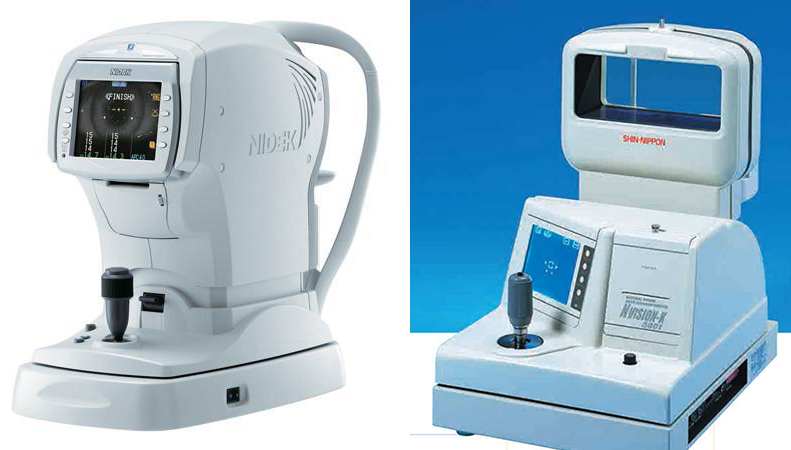 |
|
Binocular vision anomalies affected results from open-field autorefractors (right), whereas accommodation impacted closed-field refraction measurements (left). Photo: Nidek. Click image to enlarge. |
In the literature, little attention has been dedicated to intrasession variability of autorefractors, the variation of refraction between readings in one session. A recent study verified whether viewing conditions (open- or closed-field) or vision anomalies, such as ocular surface diseases, accommodative dysfunctions and binocular vision anomalies, influence differences between subjective refraction and autorefraction and characteristics of the short-term refractive state variation. It showed that short-term refractive state variations depend on the target type and viewing conditions. The presence of accommodative dysfunctions or binocular vision anomalies might increase the range of short-term refractive state variation; however, the influence of accommodative dysfunctions, binocular vision anomalies and ocular surface diseases on differences between autorefraction and subjective refraction was not observed.
The researchers measured the subjective refraction of 64 subjects between the ages of 23 and 60 during a comprehensive optometric examination and conducted the Ocular Surface Disease Index questionnaire for each. Twenty successive measurements of automated refraction of each eye were obtained using a conventional autorefractor Nidek ARK-510A and an open-field autorefractor Shin-Nippon NVision-K5001.
Binocular vision affected results from the open-field autorefractor, whereas accommodation impacted closed-field refraction measurements. The NVision-K 5001 allows for binocular viewing, so any abnormalities in binocular vision could influence gaze position or fixation, which secondarily affects autorefraction results. Closed-field instruments could induce instrument myopia caused by accommodation. Therefore, accommodation disorders could generate unusual visual behavior or exaggerated accommodative responses during measurements. The ocular surface diseases impact seemed to be inessential when subjects were encouraged to blink between automatic refraction readings.
Notably, the automatic mode typically used in autorefractors with three to five readings may not accurately represent the refractive state of the eye when averaged due to the polymodal distribution of the readings and the presence of outliers.
“The short-term refraction state variation analysis may explain difficulties in prescribing an optical correction or adaptation to a correction in certain cases,” the authors concluded in their paper.”
Kiermasz J, Sobol M, Pniewski J. Impact of viewing conditions and vision anomalies on accuracy and dynamics of non-cycloplegic autorefraction. Optom Vis Sci. November 28, 2022. [Epub ahead of print]. |

